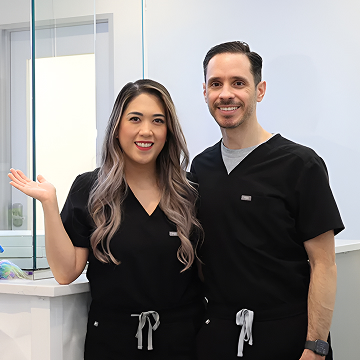The Ultimate Guide to Restorative Dentistry
A child’s smile reflects joy, growth, and health. But when dental issues interrupt that smile, timely care becomes essential. Restorative dentistry repairs damage, protects oral health, and restores confidence. This blog walks you through the key facts, giving you the knowledge every parent needs to keep their child’s smile strong, supported, and ready for life’s next big moment.
What is Restorative Dentistry?
Restorative dentistry focuses on repairing or taking the place of damaged teeth. It isn’t only about fixing problems, it’s also about improving function and helping children feel good about their smiles again. While adults often seek cosmetic upgrades, kids need a different kind of care, one rooted in both restoration and protection.
Children’s teeth are still developing. That makes early intervention especially important when damage occurs. Restorative care ensures that primary (baby) teeth remain in place long enough to guide permanent teeth into their correct positions.
Here’s what it generally includes:
- Fillings for cavities
- Crowns for broken or decayed teeth
- Space maintainers for early tooth loss
- Bonding to fix chips or minor cracks
- Root canals for baby teeth (when necessary)
Why Restorative Dentistry Matters for Your Child’s Smile
Tooth decay is the most prevalent chronic disease among children. Even with regular brushing, it can still creep in, especially with sugary snacks, juice boxes, or skipped brushing before bed. Left untreated, small dental problems can become much bigger (and more painful) ones. That’s where restorative dentistry becomes a safety net.
Here’s why timely restorative care matters:
- Prevents further damage: Treating decay early stops it from spreading to other teeth.
- Avoids infection: Bacteria can enter through untreated decay and affect the gums or deeper areas of the mouth.
- Maintains chewing function: Children need their teeth to eat properly and develop strong jaw muscles.
- Supports speech development: Missing or damaged teeth can interfere with how kids pronounce words.
- Preserves space for adult teeth: Primary teeth act as placeholders; losing them too early can disrupt alignment later.
Finding a pediatric dentist near you who offers restorative care is essential. Not all dental practices are prepared to meet the unique needs of children or provide treatment in a way that keeps young patients comfortable and at ease during their visit.
Common Restorative Dental Treatments
Let’s break down a few common treatments kids may need. These are safe, routine procedures that help restore both function and comfort.
Tooth-Colored Fillings
These match the natural shade of the tooth. They’re used to treat small to moderate cavities without standing out visually.
Stainless Steel Crowns
Often used for back molars, especially when the decay is large or the tooth has had a root canal. These are strong and durable.
Pulp Therapy (Baby Root Canal)
When a cavity gets too deep and affects the nerve, this treatment helps save the tooth. It removes the damaged pulp and seals the space.
Space Maintainers
If a baby tooth falls out too early, a space maintainer keeps the gap open for the adult tooth to come in correctly.
Dental Bonding
Used for chipped or cracked teeth. A tooth-colored material is shaped and polished to match the rest of the smile.
If you’re from the area and looking for a skilled pediatric dentist in 77098 to perform any of these treatments, be sure to choose one experienced in working with children in a calm, supportive setting.
Benefits of Restorative Dentistry
The rewards of restorative care go far beyond the dentist’s chair. Here’s what families can expect when their child receives timely, proper care:
- Better comfort: Restorative work often relieves pain or sensitivity.
- Improved confidence: Kids smile more when their teeth feel and look healthy.
- Normal eating habits: Children enjoy their meals without avoiding chewy or cold foods.
- Lower risk of future procedures: Early fixes help prevent complex and costly treatments later.
If you’re from the area and searching for restorative treatments in Houston, TX, find caring pediatric professionals who focus on your child’s comfort, offering gentle, effective solutions every step of the way.
Final Thoughts
Choosing the right dental care today can shape your child’s smile for years to come. Restorative dentistry offers lasting comfort, protection, and confidence. Don’t wait for problems to grow; take the next step now. Schedule a visit with Greenway Pediatric Dentistry and give your child the expert care they deserve, right here in a place that feels safe and familiar.

Trusted Pediatric Dental Experts
Dr. Michael Posada Orozco, DMD, MSD, CAGS, and Dr. Andrea Lam, DMD, MSD, MA, are board-certified pediatric dentists at Greenway Pediatric Dentistry in Houston, TX. With advanced training in pediatric dentistry and child development, they bring years of specialized experience in caring for infants, children, and adolescents.
Dr. Posada Orozco’s background includes extensive graduate studies that shaped his expertise in preventive care, minimally invasive treatments, and long-term oral health for growing smiles. Dr. Lam combines her clinical skills with a strong academic foundation, focusing on creating positive dental experiences and building healthy habits that last into adulthood.
Together, they are committed to pairing modern dental advancements with a warm, welcoming environment, ensuring each child receives safe, trustworthy, and high-quality care in a supportive environment.

